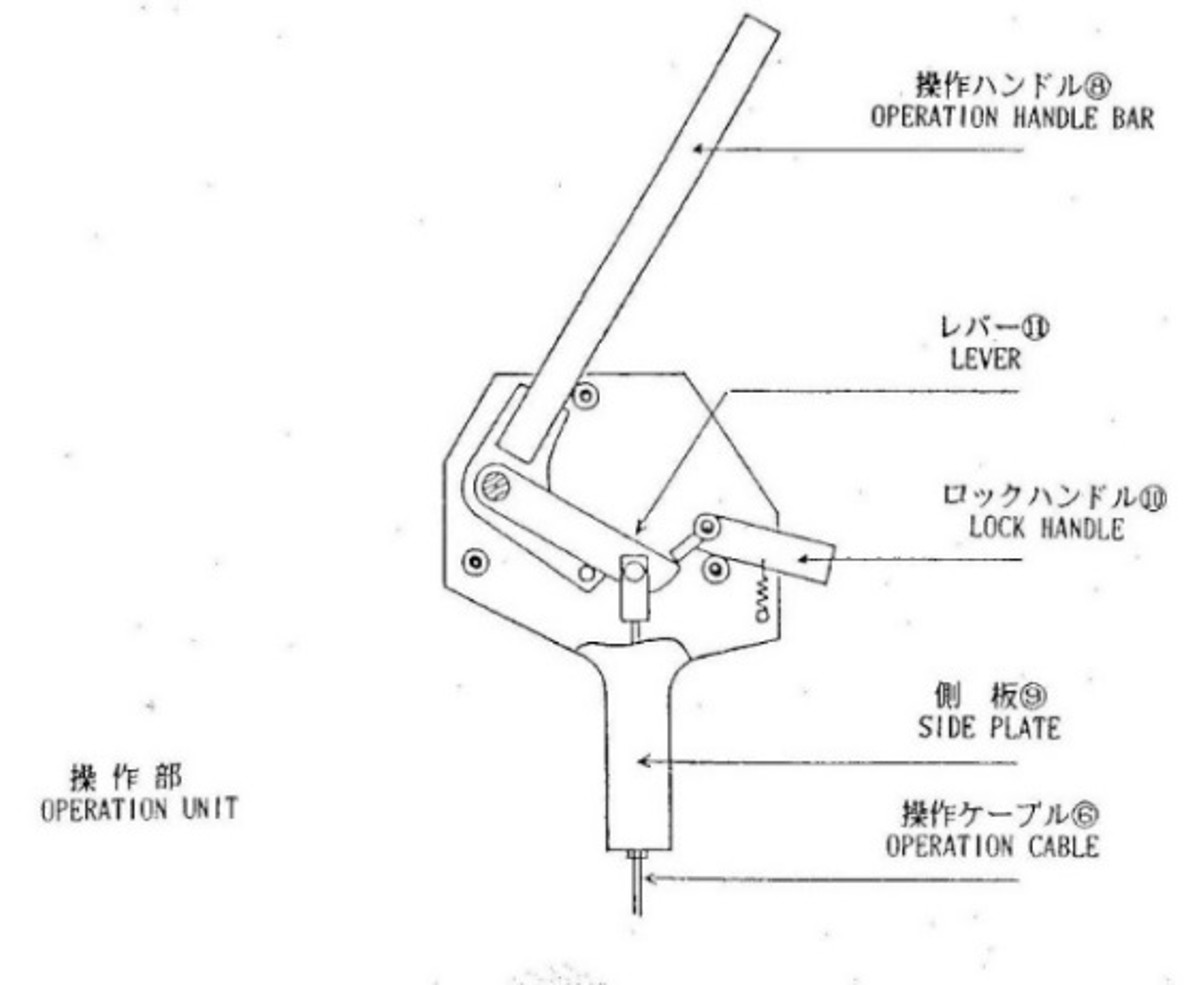High potential near-miss: Failure of lifeboat release hook mechanism
- Safety Flash
- Published on 26 October 2015
- Generated on 9 January 2026
- IMCA SF 17/15
- 3 minute read
Jump to:
A Member has reported a high potential near miss incident involving the failure of a lifeboat release hook mechanism.
What happened?
The incident occurred during post maintenance testing of the davit brake. The forward release hook opened resulting in the lifeboat being suspended partially on its fall preventer device.
The release hook system in place on board the vessel was of the Nishi-F Company on/off load release type. The basic overview of the system is shown in Figure 1 below, with the components noted.

Item Component
1 Hook
2 Side plate
3 Round handle
4 Lever
5 Latch
6 Operational cable
7 Suspension ring
To release the lifeboat, a crew member in the lifeboat pulls a locking handle bar upwards and whilst holding the handle bar in the lifted position, operates the release. In consequence the hook units on the forward and aft are simultaneously released from the suspension rings as the operation cable manipulates the lever. See Figure 2 below.

Fig. 2: Operation unit

Figure 3: End of failed cable as found. There should be approx. 1″ of M6 thread attached here, to which the attachment end (i.e. fork) would then screw on and then be secured in place by a locking nut
In this instance the boat was successfully released from the stowed position as per normal operating procedure, and lowered to the embarkation deck.
The boat was sitting at the embarkation deck for approximately five seconds when the forward hook released, resulting in the boat dropping approximately 30 cm before coming to rest on the safety shackle (fall preventer device).
Findings
Our member’s preliminary investigation noted the following:
- The operation cable was found to have failed at the forward end of the lifeboat. This was likely due to its age, in service use, and the inability to adequately monitor its condition. The cable terminates into a M6 thread; and the failure occurred directly at the locking nut – see Figure 3.
- With the condition of the operation cable it was unclear if the hook was not properly reset, or failed under load at this time.
- The vessel had not yet undergone the manufacturer’s modification to the on-load release system in accordance with International Maritime Organization (IMO) MSC 1/Circ 1392 – Guidelines for evaluation and replacement of lifeboat release and retrieval systems.
Lessons learnt
Our member recommended the following actions:
- Check the arrangements on the remaining hooks.
- Examination of lifeboat hook release mechanisms, irrespective of design to check for integrity and potential damage.
- Ensure that procedures, toolbox talks, risk assessments relating to the launch, recovery, and ‘routine’ inspection of lifeboats adequately ensured that ‘routine’ checks were made of the hook release mechanism.
- It should be noted that in this instance the fall preventer device reduced the consequence of the failure; this was a good reminder, not only of the importance of their use, but that they should also be inspected and maintained.
Related safety flashes
-
IMCA SF 13/14
17 July 2014
IMCA Safety Flashes summarise key safety matters and incidents, allowing lessons to be more easily learnt for the benefit of the entire offshore industry.
The effectiveness of the IMCA Safety Flash system depends on the industry sharing information and so avoiding repeat incidents. Incidents are classified according to IOGP's Life Saving Rules.
All information is anonymised or sanitised, as appropriate, and warnings for graphic content included where possible.
IMCA makes every effort to ensure both the accuracy and reliability of the information shared, but is not be liable for any guidance and/or recommendation and/or statement herein contained.
The information contained in this document does not fulfil or replace any individual's or Member's legal, regulatory or other duties or obligations in respect of their operations. Individuals and Members remain solely responsible for the safe, lawful and proper conduct of their operations.
Share your safety incidents with IMCA online. Sign-up to receive Safety Flashes straight to your email.